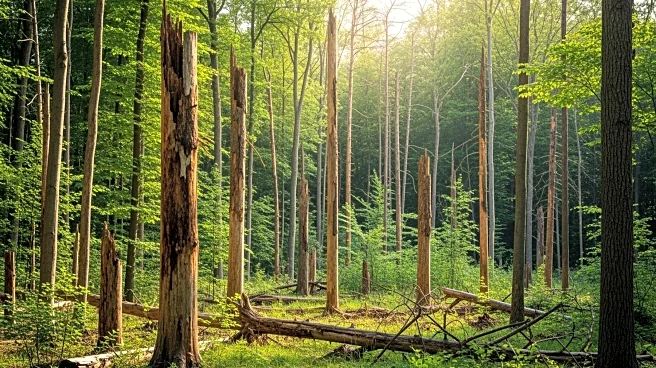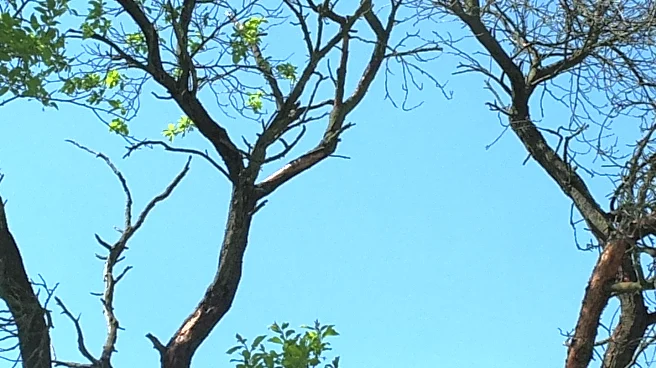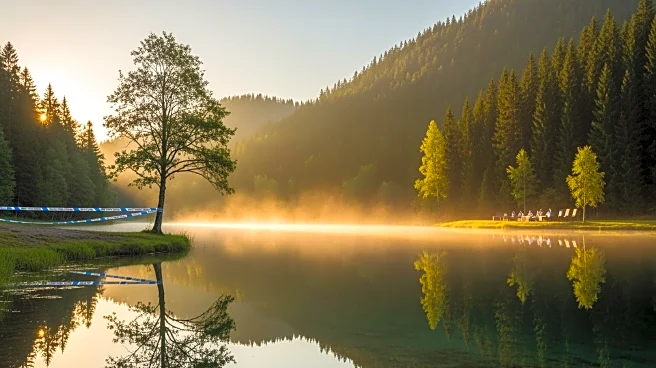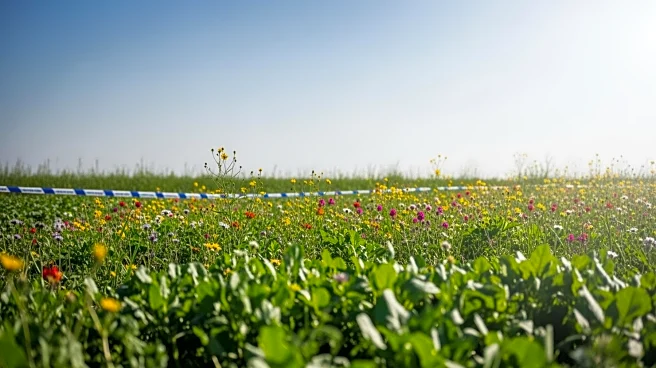What's Happening?
A study conducted by Forest Research surveyed nearly 1,200 visitors across three different locations to gauge public sentiment towards dead and decaying trees in the landscape. The survey revealed that
three-quarters of respondents felt neutral, happy, or very happy about the presence of such trees. The research sites included Stowe Gardens in Buckinghamshire, wood pastures at Rydal in the Lake District, and the Knepp Estate rewilding project in West Sussex. Visitors appreciated the aesthetic and ecological attributes of dead and decaying trees, such as their shape, structure, and the contrast they provide with living trees. Nearly half of the respondents reported feeling creative and inspired by these natural elements. The study also found that visitors to less formal, wilder sites, and those with a stronger connection to nature, were more supportive of leaving dead trees in place.
Why It's Important?
The findings of this study have significant implications for environmental management and conservation strategies. By highlighting public support for dead and decaying trees, the research suggests that site managers can enhance visitor experiences by preserving these natural elements. This could lead to a shift in how landscapes are managed, promoting biodiversity and ecological health. The study also underscores the importance of educating the public about the environmental benefits of dead and decaying trees, as those with less knowledge were more likely to view them negatively. Enhancing public understanding could foster greater support for conservation efforts and sustainable landscape management practices.
What's Next?
The study suggests that increasing communication and educational efforts about the ecological benefits of dead and decaying trees could further bolster public support for their preservation. Site managers and conservationists may consider developing programs or informational materials to educate visitors, particularly those with less knowledge about the ecological roles of these trees. This could involve guided tours, informational signage, or interactive exhibits that highlight the importance of dead and decaying trees in supporting wildlife habitats and promoting biodiversity.
Beyond the Headlines
The study's findings may also influence broader cultural perceptions of nature and conservation. By recognizing the aesthetic and ecological value of dead and decaying trees, there could be a shift towards a more holistic understanding of natural landscapes. This perspective may encourage more sustainable practices in urban planning and landscape design, integrating natural decay processes as a vital component of ecological health. Additionally, the study highlights the potential for creative inspiration derived from natural elements, which could influence art, design, and cultural expressions related to nature.











